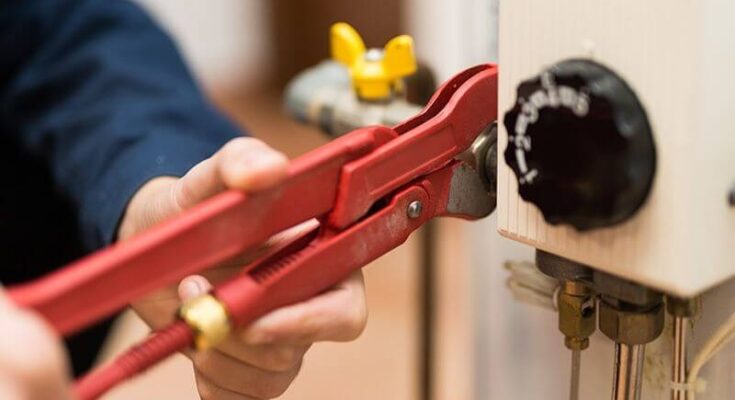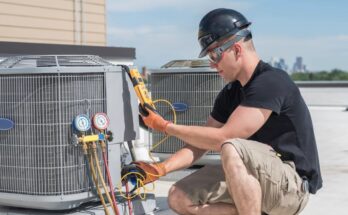Replacing a hot water cylinder can seem daunting, but with the right information and preparation, it can be a smooth and straightforward process. This guide will walk you through each step, ensuring your hot water cylinder replacement is hassle-free.
Understanding the Need for Replacement
Rheem 180L Stainless Steel Hot Water Cylinder are essential for providing a consistent supply of hot water in many homes. Over time, however, they can become less efficient, develop leaks, or even fail completely. If your hot water cylinder is over ten years old, experiencing frequent issues, or not providing adequate hot water, it might be time to consider a replacement.
Types of Hot Water Cylinders
Before diving into the replacement process, it’s crucial to understand the different types of hot water cylinders available:
Vented Cylinders: These are connected to a cold water storage tank, usually located in the loft. They are simple in design and generally less expensive but require more space.
Unvented Cylinders: These are connected directly to the mains water supply. They don’t need a cold water storage tank and can provide better water pressure but are typically more expensive and require an annual maintenance check.
Combination Cylinders: These integrate the cold water tank and hot water cylinder into one unit. They are ideal for smaller homes with limited space.
Choosing the right type of cylinder depends on your home’s needs, available space, and budget.
Preparing for Replacement
Proper preparation is key to a hassle-free replacement. Here’s what you need to do:
Assess Your Current System: Identify the type and size of your current hot water cylinder. This information will help you choose a suitable replacement.
Measure the Space: Ensure the new cylinder will fit in the existing space. Measure the dimensions and check for any obstructions.
Research and Purchase: Look for a reputable supplier and purchase a high-quality hot water cylinder that meets your needs. Consider energy efficiency ratings and warranty options.
Hire a Professional: Replacing a hot water cylinder involves plumbing and electrical work, so it’s best to hire a qualified professional. They can ensure the installation meets all safety and regulatory standards.
Step-by-Step Replacement Process
Here’s a step-by-step guide to the replacement process:
Turn Off the Power and Water: Safety first! Turn off the electricity to the hot water cylinder and shut off the water supply.
Drain the Old Cylinder: Open the hot water taps in your home to drain the existing hot water cylinder. You may need a hose to direct the water to a suitable drainage point.
Disconnect the Old Cylinder: Carefully disconnect the plumbing and electrical connections. Make sure to label the wires for easy reconnection later.
Remove the Old Cylinder: With the connections removed, carefully lift out the old cylinder. This may require assistance, as cylinders can be heavy and awkward to handle.
Prepare the New Cylinder: Place the new cylinder in position and ensure it fits properly. Check all the connections to make sure they match up.
Connect the Plumbing and Electrical: Reconnect the plumbing and electrical connections. If you’re installing an unvented cylinder, ensure the pressure relief valves and expansion vessel are correctly fitted.
Fill and Test: Turn the water supply back on and fill the new cylinder. Check for any leaks and ensure all connections are secure. Once filled, turn the power back on and allow the cylinder to heat up. Test the hot water taps to make sure everything is working correctly.
Clean Up and Final Checks: Clean up any mess and double-check all connections. Make sure the area around the new cylinder is clear and accessible.
Maintenance Tips
To keep your new hot water cylinder running efficiently, follow these maintenance tips:
Regular Inspections: Check for leaks, corrosion, and any signs of wear and tear.
Annual Servicing: If you have an unvented cylinder, schedule an annual service with a qualified professional.
Insulation: Ensure your cylinder is properly insulated to reduce heat loss and save on energy bills.
Conclusion
Replacing a hot water cylinder doesn’t have to be a stressful experience. By understanding your needs, preparing thoroughly, and hiring a professional, you can ensure a hassle-free replacement process. Enjoy the comfort and efficiency of your new hot water cylinder for years to come!
Hot Water Solutions
Address: 3d Tait Place, Rosedale, Auckland 0632, New Zealand
Phone: 0800497658
Email: info@hotwatersolutions.nz
Website: https://hotwatersolutions.nz/
Location: https://maps.app.goo.gl/1PErGDvtptttvYQY6
Follow us: https://www.instagram.com/pete_hotwatersolutions/




